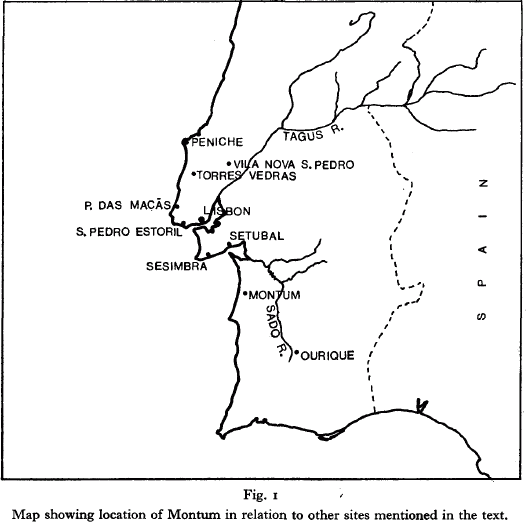Volume 41 - December 1975
Research Article
Some Hampshire and Dorset handaxes and the question of ‘Early Acheulian’ in Britain
-
- Published online by Cambridge University Press:
- 27 May 2014, pp. 1-9
-
- Article
- Export citation
Two Shoulder Blades with Healed Lesions from Star Carr
-
- Published online by Cambridge University Press:
- 27 May 2014, pp. 10-16
-
- Article
- Export citation
Ayios Epiktitos Vrysi, Cyprus: preliminary results of the 1969-1973 excavations of a neolithic coastal settlement
-
- Published online by Cambridge University Press:
- 27 May 2014, pp. 17-45
-
- Article
- Export citation
On the Dating of Khirokitia in Cyprus
-
- Published online by Cambridge University Press:
- 27 May 2014, pp. 46-49
-
- Article
- Export citation
The Excavation of Tell Abu Hureyra in Syria: A preliminary report
-
- Published online by Cambridge University Press:
- 27 May 2014, pp. 50-77
-
- Article
- Export citation
Mediterranean Alluviation: New Evidence from Archaeology
-
- Published online by Cambridge University Press:
- 27 May 2014, pp. 78-84
-
- Article
- Export citation
Early Neolithic Land Use in Yugoslavia
-
- Published online by Cambridge University Press:
- 27 May 2014, pp. 85-104
-
- Article
- Export citation
Social Dimensions of Early Neolithic Denmark
-
- Published online by Cambridge University Press:
- 27 May 2014, pp. 105-118
-
- Article
- Export citation
The Excavation of an Oval Burial Mound of the Third Millennium bc at Alfriston, East Sussex, 1974
-
- Published online by Cambridge University Press:
- 27 May 2014, pp. 119-152
-
- Article
- Export citation
The Use of Copper in the Cucuteni-Tripolye Culture of South-East Europe
-
- Published online by Cambridge University Press:
- 27 May 2014, pp. 153-166
-
- Article
- Export citation
The Megalithic Tomb of Pedra Branca, Portugal. Preliminary Report
-
- Published online by Cambridge University Press:
- 27 May 2014, pp. 167-178
-
- Article
- Export citation
Radiocarbon Dates from Bosumpra Cave, Abetifi, Ghana
-
- Published online by Cambridge University Press:
- 27 May 2014, pp. 179-182
-
- Article
- Export citation
Mycenaean Greece and Europe: the Evidence of Bronze Tools and Implements
-
- Published online by Cambridge University Press:
- 27 May 2014, pp. 183-202
-
- Article
- Export citation
Planned Hillfort Interiors
-
- Published online by Cambridge University Press:
- 27 May 2014, pp. 203-221
-
- Article
- Export citation
The Polden Hill Hoard, Somerset
-
- Published online by Cambridge University Press:
- 27 May 2014, pp. 222-234
-
- Article
- Export citation
Late Devensian and Early Flandrian Barbed Points from Sproughton, Suffolk
-
- Published online by Cambridge University Press:
- 27 May 2014, pp. 235-241
-
- Article
- Export citation
Reviews
Palaeoeconomy. Edited byE. S. Higgs. Cambridge University Press, 1975. Price £8.50.
-
- Published online by Cambridge University Press:
- 27 May 2014, pp. 242-243
-
- Article
- Export citation
Domestikationsforschung und Geschichte der Haustiere. Edited By Janos Matolcsi. 401pages, 120 figures. Akademiai Kiado, Budapest, 1973.
-
- Published online by Cambridge University Press:
- 27 May 2014, p. 243
-
- Article
- Export citation
The Yarmukian Culture of the Neolithic Period. ByM. Stekelis. 45pages, 75 plates. Magnes Press, Jerusalem. Price £5.25.
-
- Published online by Cambridge University Press:
- 27 May 2014, p. 244
-
- Article
- Export citation
A History of Domestic Animals in Central and Eastern Europe. ByS. Bokonyi. 597pages, 150 figures. Academiai Kiado, Budapest, 1974. Price $22.00.
-
- Published online by Cambridge University Press:
- 27 May 2014, pp. 244-245
-
- Article
- Export citation

